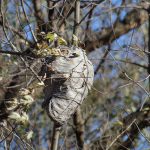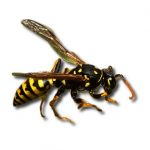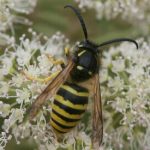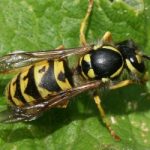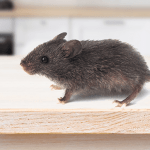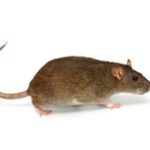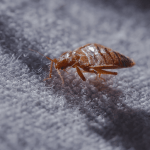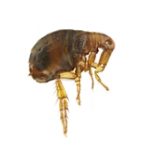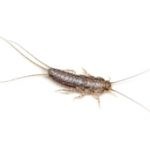How to Treat a Wasp Sting
Besides experiencing soreness and a bit of itching where a wasp has stung them, most people don’t agonise a lot as a result of wasp stings. Still, everyone seeks a way to alleviate the pain and help stings heal faster. But if you’re allergic, your body will react in more severe ways and sometimes professional medical help might be required. Below we’ll explore the wasp sting treatments that are out there as well as cases in which you need to consult a doctor.
Some quick facts about wasp stings
- Wasps have alkali stings. It is considered that you can neutralise the venom with vinegar or other acidic substances – common mistreatment which we’ll touch upon later;
- When stinging, wasps release a pheromone that attracts and aggravates other nearby wasps and causes them to join the attack;
- A wasp sting usually wears off in the first 24 hours but some people may develop allergic reactions with symptoms that can last for days;
- Only the female wasp’s sting. Males, also known as drones, do not have a stinger;
- Unlike bees, wasps can sting their target repeatedly without getting hurt.
Wasp sting treatment at home
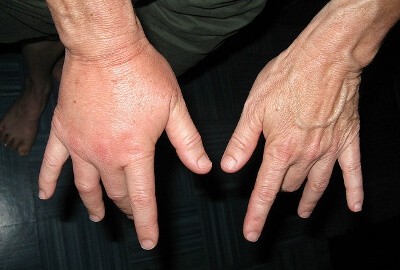
Although quite painful, wasp stings fade relatively quickly and are harmless for most people. Even so, treating wasp stings can provide some relief from their pain.
1. Clean the sting site
First things first, use soap and water to wash the afflicted region. This lessens the chance of infection and aids in removing any poison.
Wasps normally don’t leave their sting behind, in contrast to bees. However, if you see one, carefully scrape it out using a flat-edged object, something like a bank card. Tweezers should not be used because doing so could cause extra venom to enter your skin.
2. Apply a cold compress
Once the area is clean, place a cold compress or an ice pack wrapped in a tea towel on the sting site. Keep it there for 10 to 15 minutes. The cold helps to reduce swelling and numb the pain. You can repeat this every hour as needed.
3. Soothe the pain and itching
The sting might still feel uncomfortable for a while, so here are a few things you can do:
- Take pain relief! Paracetamol or ibuprofen can help ease pain and reduce inflammation;
- Try an antihistamine. If there’s itching or swelling, an over-the-counter antihistamine like loratadine or cetirizine can be really helpful;
- Use soothing creams. A dab of hydrocortisone cream or calamine lotion can ease irritation and calm the skin.
4. Extra tips
- Do not scratch the area no matter how itchy it is. This way, you will prevent swelling and will reduce the risk of infection;
- Avoid home remedies such as lemon and vinegar as they are unlikely to reduce the symptoms.
Image by: Robbie Sproule / CC BY 2.0
Want to prevent wasps from nesting in your property?
Contact local wasp expert and get immediate solution!
When should you seek medical advice
If you experience wasp stings for the first time and are worried, contact your GP to get professional advice and reassurance. You should also get in touch with a medical professional if:
- Your symptoms do not subside, or get worse in the next few days;
- The sting affects a sensitive body area such as the mouth, throat or eyes;
- You develop infection symptoms. Local symptoms affect the wounded area and include severe pain, pus, redness, and swelling. Symptoms of a widespread infection, also known as general infection, include swollen glands, fever, and other flu-like symptoms.
When should you seek emergency help?
If you are allergic to wasp stings, do not postpone calling an ambulance. Although anaphylactic shock is rare, it can still occur and it’s important to remember that it’s life-threatening. Get help if you develop three or more of the following symptoms:
- Severe swelling, itchiness and skin rash;
- Burning sensation on the skin or swollen throat and tongue;
- At times, lack of oxygen may cause the skin to appear bluish – a phenomenon is known as cyanosis;
- Shortness of breath, wheezing or stridor, not necessarily all at once;
- A cough or pain when swallowing;
- Lightheadedness, headache, confusion or anxiety, even loss of consciousness;
- Abdominal pain, vomiting, slow or fast heart rate.
Allergic reactions can be developed after just a few stings. But a single wasp sting can also unlock sensitivity to the venom and trigger allergy to future wasp stings.
Home remedies for bee and wasp stings – do they work?
What doesn’t work
The following often suggested wasp treatments have no scientific evidence to back up the claims that they work: Garlic, onions, vinegar, lemons, saliva, and tea tree oil all have no proof of being effective in treating wasp and insect stings.
Additionally, it is considered that acidic substances neutralize the alkali venom of wasp stings. However, the venom is comprised of many different ingredients that are causing the pain, so neutralising just the acidic ones won’t do much. Moreover, the venom is injected deep under the skin and spreads through the nearby tissue — applying any ingredient topically onto the surface will not neutralise the venom.
Treatments that work
- Ice – A great way to reduce swelling and redness from a wasp sting by slowing down the blood flow near the sting. Wrap a few ice cubes or an ice pack in a towel and place it on the affected area. Leave it for about 15 to 20 minutes and apply an antihistamine cream after.
- Cucumber – Fresh cucumber slices can also cool the area and provide you with temporary relief.
- Hot water – Run the affected area under water as hot as you can handle for a few seconds. Studies have shown that this helps to reduce swelling, itching and pain.
- Antihistamine – Products containing antihistamine relieve itching and ease swelling. You can either use creams for local application or take them in the form of pills. Make sure to consult your GP beforehand and read the product labels carefully.
- Menthol – With its cooling qualities, menthol and products containing it are a great anti-itch treatment. Apply it to relieve the symptoms of wasp stings.
- Painkillers – You can take paracetamol or ibuprofen to ease the pain, though since stings are generally not that painful, you’ll likely not need to.
However, you should keep in mind that if the wasp nest near your home has a lot of inhabitants, you should have a wasp nest removal to prevent wasp stings.
Are there any benefits to being stung by a wasp?
Believe it or not, a wasp sting has several surprising benefits—though let’s be honest, most of us would prefer not to learn them first-hand! Sure, they’re painful and may cause allergies for certain individuals, but researchers have discovered that wasp venom really has some quite fascinating qualities that might be beneficial in medicine.
Researchers are investigating how particular venom components could aid in the battle against cancer or infections. Of course, this sort of stuff is occurring in laboratories, not your back garden, so no need to begin volunteering as a research subject the next time a wasp flies by!
There’s also something called venom immunotherapy, which is a fancy way of saying that controlled, small amounts of venom can enable allergy sufferers to develop a tolerance over time. But to be clear: getting randomly stung by a wasp is definitely not how you should go about it!
So, while it’s cool that wasp venom might have some medical benefits, the sting itself still isn’t something to welcome. The pain, swelling, and risk of an allergic reaction just aren’t worth it. So it’s still best to stay away from the wasp nest, and leave the experimenting to the scientists!
Have you found a wasps nest?
We only provide valuable information regarding different methods to treat wasps sting. Anyway, we are commercial service provider and cannot give you a medical advice.



